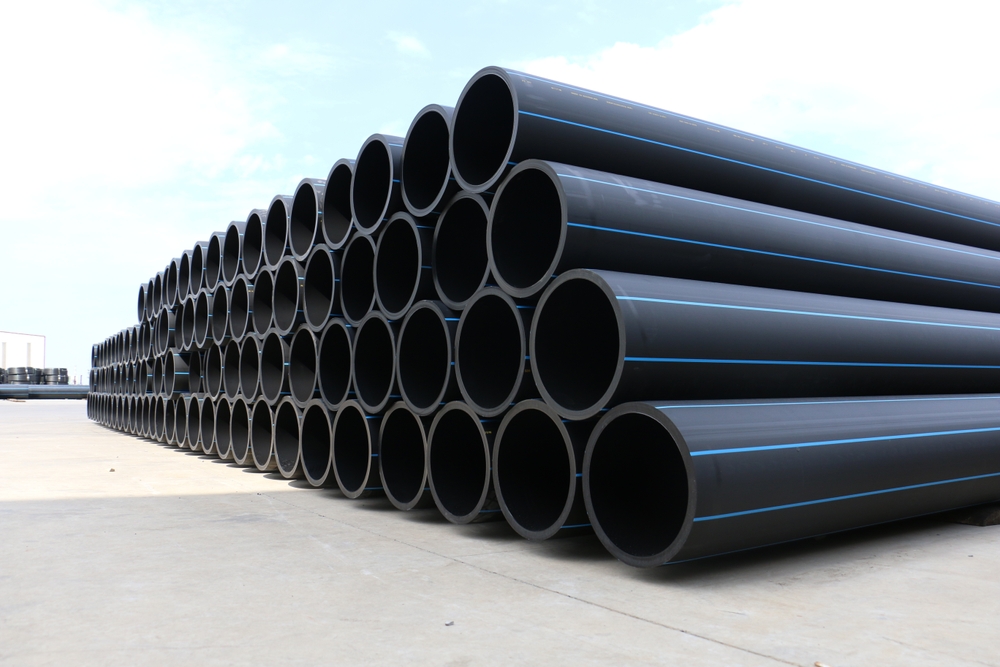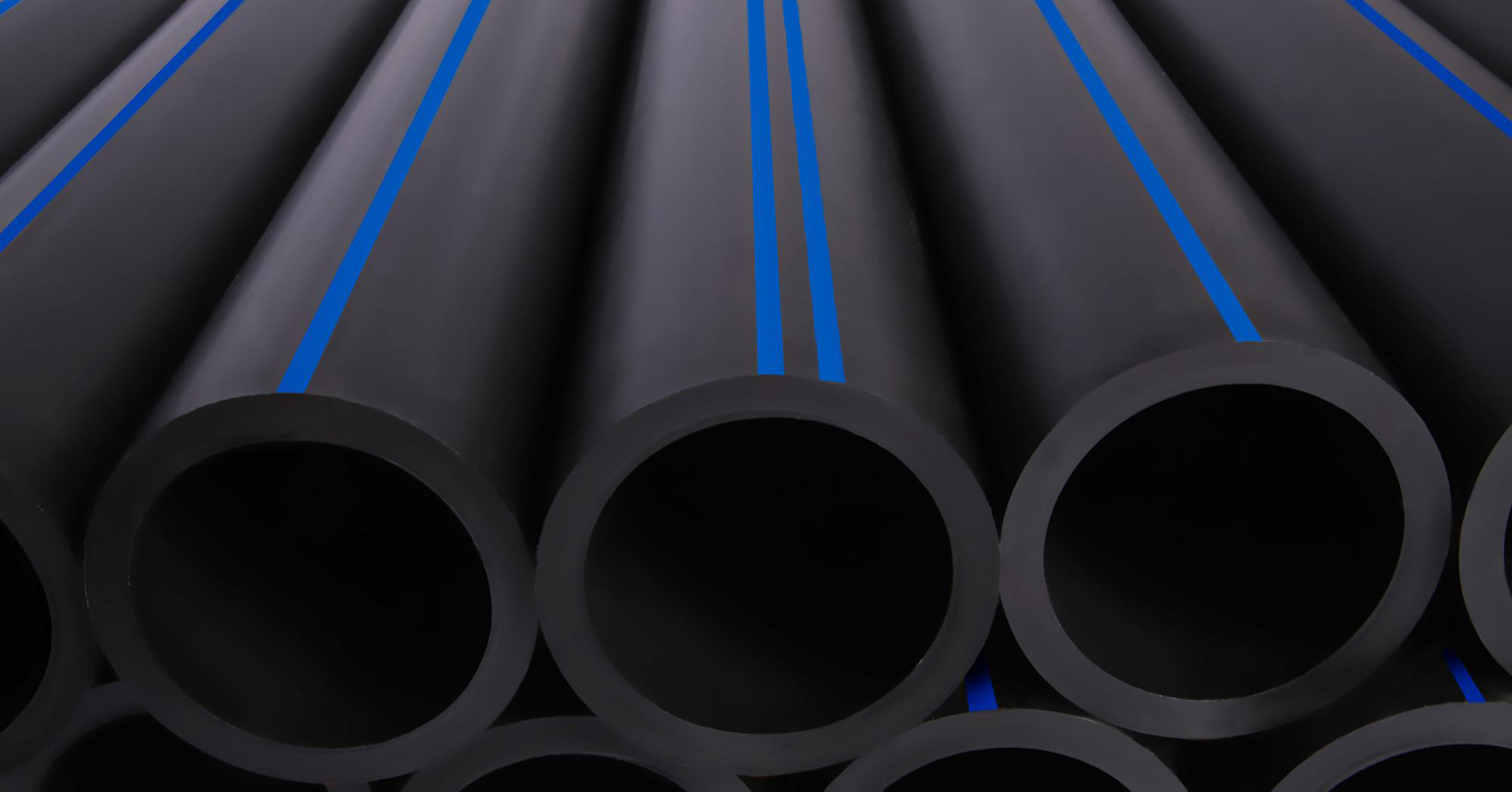Why Texas hdpe pipe manufacturer Is Setting Standards in Advanced Pipe Solutions
The Vital Steps for Successful Setup of HDPE Pipeline in Your Following Project
Effective setup of HDPE pipeline calls for mindful planning and implementation. Key actions include examining task requirements, preparing the site, and picking proper joining methods. Each phase plays a vital function in making sure the integrity and efficiency of the pipeline. Comprehending these crucial actions can considerably affect the overall success of the job - Pipe Manufacturing Midland TX. The subtleties of each step may hold the key to overcoming typical difficulties faced throughout setup.
Recognizing the Benefits of HDPE Pipe
High-density polyethylene (HDPE) pipeline supplies numerous benefits that make it a favored choice for different applications. Its high resistance to deterioration and chemicals guarantees longevity sought after atmospheres, substantially expanding the life expectancy of setups. In addition, HDPE's flexibility enables easier installment, particularly in difficult terrains, as it can bend without breaking. The light-weight nature of HDPE pipe simplifies transport and handling, reducing labor expenses throughout installation.
Moreover, HDPE pipeline is understood for its low rubbing coefficient, which boosts liquid flow and minimizes power intake. Its seamless building lowers the danger of leakages, contributing to better resource administration and environmental management. In enhancement, HDPE is recyclable, lining up with sustainable practices and lowering environmental influence. In general, the combination of strength, versatility, and eco-friendliness makes HDPE pipeline an exceptional selection for a variety of jobs, from water circulation to industrial applications.
Preparation Your HDPE Pipeline Setup
When preparing a setup of HDPE pipeline, careful factor to consider of several key aspects is important to safeguard an effective task. First, job managers have to assess the particular needs of the pipe, consisting of the intended usage, flow prices, and ecological problems. Comprehending these specifications will certainly direct the option of ideal pipe measurements and material grade.
Next, timelines must be developed, factoring in purchase timetables and any type of possible hold-ups. Control with regional authorities for permits and regulatory compliance is also vital. In addition, a detailed budget needs to be prepared, incorporating all expenses connected with materials, labor, and machinery.
It is essential to engage a qualified team experienced in HDPE pipe installation. Their proficiency will certainly aid minimize threats, guarantee adherence to market requirements, and inevitably add to the job's success. Comprehensive preparation prepares for a smooth setup process and durable performance of the HDPE piping system.
Preparing the Site for Setup
Appropriate site preparation is essential for the effective installation of HDPE pipe. Before installment starts, the site should be extensively examined to assure it meets all essential needs. This consists of surveying the ground for existing structures, energies, and potential threats that might hamper the installation procedure.

Correct altitude and alignment must be established to keep a constant gradient for water drainage purposes. Correct drain around the setup site is additionally imperative to avoid water accumulation, which can cause issues down the line.
Methods for Joining HDPE Pipings
Attaining a trustworthy connection in between HDPE pipelines is essential for making certain the integrity and durability of the installment. Various methods exist for joining these pipes, each suited for different task requirements. Blend welding is one of one of the most common techniques, making use of warm to bond the pipe ends together, producing a smooth and sturdy link. This technique can be further categorized into outlet fusion and butt combination, depending on the pipeline arrangements.
Mechanical fittings are an additional option, using clamps and threaded connectors to join areas of HDPE pipeline. While generally faster to mount, they may require added maintenance gradually. Electrofusion is a specialized method that includes using electrical present to warm and fuse the pipelines via specifically created fittings, making certain a solid bond. Choosing the proper signing up with method is crucial, as it directly impacts the overall efficiency and dependability of the HDPE piping system in the intended application.
Evaluating and Assessment of Installed Pipes
The testing and inspection of mounted HDPE pipes are important to guaranteeing their functionality and durability. This process includes visual evaluation techniques, stress testing techniques, and leakage detection treatments to determine potential concerns. By employing these methods, specialists can confirm the stability of the installation before it is placed right into usage.
Visual Evaluation Techniques
Employing reliable visual evaluation methods is important for guaranteeing the integrity of mounted HDPE pipes. Inspectors ought to methodically examine all noticeable sections of the pipe to recognize any kind of signs of damage, imbalance, or inappropriate installment. Key indicators to examine include joint honesty, surface abnormalities, and links. Examiners might utilize tools such as magnifying glasses or cams to enhance exposure and detail. It is necessary to look for signs of ecological stress and anxiety, such as distorting or too much flexing, which can endanger performance. Constant documents of findings permits tracking adjustments over time and aids overview required repair services. By sticking to established aesthetic evaluation methods, task groups can especially decrease the threat of future failings and assure long-term reliability of the piping system.
Pressure Testing Approaches
Visual assessment functions as an initial step, yet it is not enough on its own to ensure the efficiency of installed HDPE pipelines. Pressure testing methods are vital for making certain the stability here are the findings of these systems. Usually, hydrostatic testing is employed, where the pipelines are loaded with water and based on pressure levels above the designated operating stress. This approach helps identify weak points or potential leakages. Pneumatically-driven screening can also be made use of, although it carries greater dangers because of the compressibility of air. Despite the method chosen, sticking to market standards and safety procedures is essential. After conducting pressure tests, thorough paperwork is necessary to verify the results and confirm that the setup satisfies all functional requirements before continuing to the following phase of the job.

Leak Detection Procedures
Exactly how can one ensure that mounted HDPE pipelines are devoid of leaks? Effective leak discovery treatments are crucial to safeguard the stability of the system. Aesthetic inspections should be executed, looking for signs of water accumulation or soil erosion around pipeline joints. Following this, stress testing can confirm the system's toughness. A common approach is the hydrostatic examination, where water is presented under stress, monitoring for drops that show possible leakages. Furthermore, advanced modern technologies, such as acoustic sensors or infrared thermography, can discover leaks that might not be visible. Normal tracking and upkeep additional add to the durability of HDPE pipes, guaranteeing they continue to be leak-free throughout their functional life-span. Correct documentation of these treatments is crucial for conformity and future recommendation.
Maintenance Tips for Long-Term Efficiency
To ensure the long life of HDPE pipes, developing a routine examination routine is necessary. This aggressive strategy permits the early detection of potential problems, reducing pricey repairs. Furthermore, executing appropriate cleansing techniques will aid keep peak efficiency and prevent accumulation that can influence performance.
Regular Examination Set Up
HDPE pipelines are understood for their durability and resistance to deterioration, advice developing a normal inspection schedule is essential for guaranteeing their lasting efficiency. Routine inspections aid determine potential problems such as leaks, joint honesty, and environmental impacts that might influence the pipe's capability. It is suggested that inspections occur a minimum of biannually, or extra regularly in environments with severe conditions. hdpe pipe suppliers Midland TX. During these assessments, aesthetic checks must be carried out to discover indications of wear or damages. In addition, making use of innovation such as ultrasonic screening can provide additional insights into the pipe's problem. By executing a structured evaluation timetable, project managers can proactively deal with problems, thereby prolonging the life expectancy of HDPE pipes and keeping system effectiveness
Appropriate Cleaning Techniques
Appropriate cleansing strategies play a necessary function in maintaining the long-term efficiency of HDPE pipelines. Routine cleaning protects against the buildup of particles, sediment, and biofilm, which can bring about obstructions and reduced flow effectiveness. Operators must employ techniques such as high-pressure water jetting or foam cleaning to properly get rid of impurities without damaging the pipeline surface area. It is vital to avoid making use of severe chemicals that might degrade HDPE product. Additionally, scheduled maintenance checks need to include visual assessments for any kind of indications of wear or damage. Effectively educated workers need to accomplish these cleansing procedures, making sure conformity with security and environmental policies. By applying these techniques, the life-span of HDPE pipes can be substantially prolonged, making certain ideal efficiency throughout their operational life.
Frequently Asked Inquiries
What Are the Environmental Influences of HDPE Pipeline Manufacturing?
The ecological impacts of HDPE pipe manufacturing include greenhouse gas discharges, power usage during manufacturing, potential plastic contamination, and difficulties in reusing. However, HDPE's durability and resistance to deterioration can reduce some ecological problems.
How Does HDPE Pipeline Compare to Other Materials?

What Equipment Are Needed for HDPE Pipeline Setup?
Essential devices for HDPE pipe setup consist of a fusion equipment, pipeline cutters, shovels, gauging tape, and security equipment. Correct equipment warranties efficient, safe handling and installation, adding to the project's total success and integrity.
Are There Any Type Of Particular Regulations for HDPE Pipeline Setup?
Specific laws for HDPE pipe installment differ by area, usually governed by local, state, or government codes. Conformity with these policies guarantees safety, environmental management, and functionality, making useful content adherence important for effective task outcomes.
Can HDPE Pipeline Be Recycled After Usage?
Yes, HDPE pipes can be reused after use. Their thermoplastic nature enables reprocessing, making them ideal for reusing right into brand-new products. This sustainability facet adds to ecological preservation and promotes round economic situation practices in building and construction.